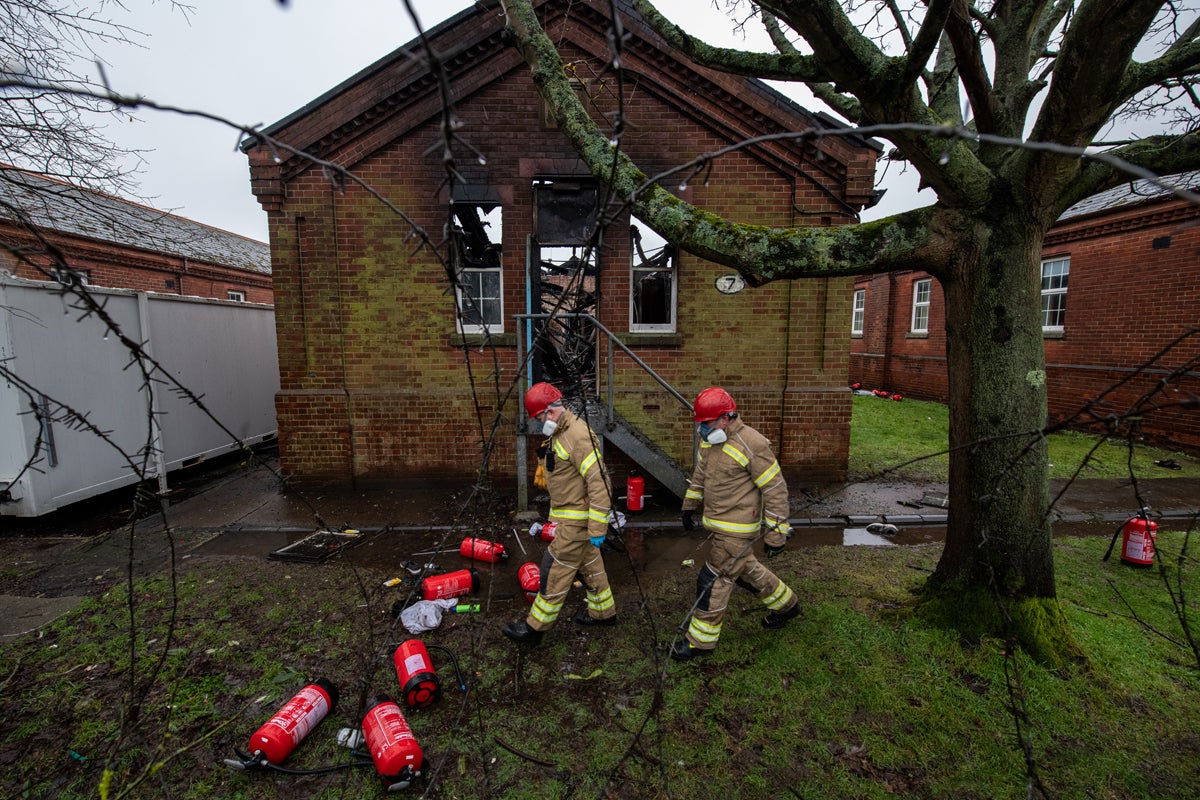Home Office placed hundreds of asylum seekers at ‘serious risk’ of fire in Napier Barracks, document reveals
Lawyers say ministers took months to act on fire safety warnings despite order to comply within 28 days

Your support helps us to tell the story
From reproductive rights to climate change to Big Tech, The Independent is on the ground when the story is developing. Whether it's investigating the financials of Elon Musk's pro-Trump PAC or producing our latest documentary, 'The A Word', which shines a light on the American women fighting for reproductive rights, we know how important it is to parse out the facts from the messaging.
At such a critical moment in US history, we need reporters on the ground. Your donation allows us to keep sending journalists to speak to both sides of the story.
The Independent is trusted by Americans across the entire political spectrum. And unlike many other quality news outlets, we choose not to lock Americans out of our reporting and analysis with paywalls. We believe quality journalism should be available to everyone, paid for by those who can afford it.
Your support makes all the difference.The Home Office placed hundreds of asylum seekers in military barracks where they were at “significant risk” of a fire breaking out, previously unseen documents show.
A report by the fire safety inspectorate into Napier Barracks in Kent found that the measures in place to reduce the risk of fire at the site did not ensure residents were “appropriately protected from serious risk”.
The Ministry of Defence site was repurposed into asylum accommodation in September and around 400 individuals were subsequently moved in.
It has now emerged that an inspection of the barracks by the Crown Premises’ Fire Safety Inspectorate (CPFSI) in November found smoke alarms were incorrectly placed, emergency evacuation drills had not been undertaken and there was “no effective fire safety measure” in place.
“The failures to cooperate and to coordinate fire safety measures as necessary have led to a consequent failure to protect relevant people appropriately from serious risk,” it states.
The damning report was sent to Home Office contractors on 30 November, along with a letter from the fire safety inspectorate ordering them to rectify the issues highlighted within 28 days.
The letter, seen by The Independent, states: “Following the fire safety inspection of the above premises on 24/11/2020, I am writing to confirm my opinion that the identified individuals or groups of people would be at risk in case of fire. You will need to take action to ensure their safety.
“In the event that a permanent solution cannot be implemented immediately, you will need to introduce interim measures to reduce the level of risk whilst longer-term measures are being prepared.”
Lawyers acting on behalf of former Napier Barracks residents say however that the Home Office failed to comply and did not take action to rectify the fire safety issues until March 2021, when Home Office contractor Clearsprings carried out a fire risk assessment.
A fire broke out at the camp on 29 January, during which no one was harmed but a “significant amount of damage” was caused.
The fire inspectorate’s warnings were revealed during a court hearing surrounding the legality of the Home Office’s use of Napier Barracks as accommodation for asylum seekers, with lawyers acting on behalf of six former residents arguing that the conditions amount to being unlawful.
During the two-day hearing at the High Court, the judge is to consider whether the Home Office’s decision to house asylum seekers in the military site breaches human rights law.
There was a major Covid outbreak at the camp in January, which saw nearly 200 people infected. Residents were subsequently gradually moved out until it was fully emptied on 2 April.
However, the Home Office has decided to continue using the site. Around 70 asylum seekers were moved there last Friday and more are due to be transferred in due course, according to the department.
During the court hearing on Wednesday, the judge heard that an unpublished report by the prison inspectorate from February reveals there have been seven suicide attempts, seven incidents of self-harm and that a third of residents reported feeling suicidal.
It also heard a psychiatric report for one of the claimants, who has a history of trauma both in his home country and on his journey to the UK, found that he had started to experience flashbacks and nightmares since being placed in camp, with his anxiety and PTSD significantly worsening.
A statement from another claimant, a torture victim, said the conditions had caused him to develop suicidal thoughts on his second day at the barracks, and that he had witnessed other residents trying to commit suicide, including one man who tried to slice his neck.
Tom Hickman QC, representing the other four claimants, told the court there had been a “total systems failure” when asylum seekers were placed at Napier Barracks.
“There was no risk assessment conducted before the barracks was put into use, no Covid protocol, no testing, no outbreak plan,” he added.
He said the site had “all the hallmarks of a detention facility” and was “not adequate accommodation for vulnerable persons”, describing it as “squalid, ill-equipped, lacking in personal privacy and unsafe”.



Join our commenting forum
Join thought-provoking conversations, follow other Independent readers and see their replies
Comments